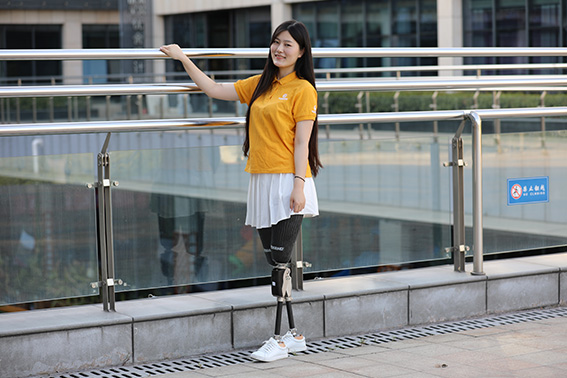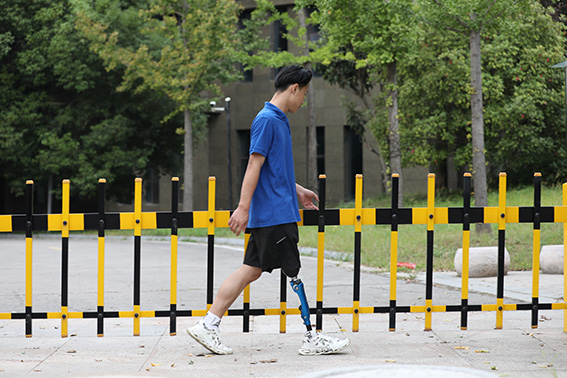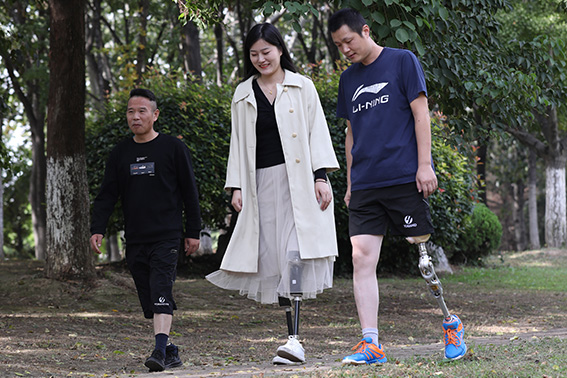In the daily use of prosthetics, some patients develop poor gait due to the incorrect method of wearing the prosthesis, and are also very prone to skin abrasions. Many patients do not pay attention to the wearing method of prosthesis after amputation. Let me introduce the wearing method of prosthesis.
When wearing the prosthesis, the patient can sit or stand on a chair and apply some talc or prickly heat powder to the residual limb. Wrap the stump with smooth, thin stockings or fabric. Note that the fabric or socks used should be kept flat, without wrinkles, the upper edge should cover the base of the thigh, and the ischial tuberosity should be wrapped behind it.
If there is a prosthesis with a negative pressure valve, the negative pressure valve on the prosthetic socket needs to be removed. Place the distal end of the wrap or sock into the socket. Thread the distal end of the wrap or sock through the hole in the load valve. Insert the residual limb into the prosthetic socket, stand up, straighten the prosthesis, press the prosthesis with one hand to prevent the joint from bending, and pull out the wrapping cloth with the other hand. When pulling the wrapping out, you should pay attention to the feeling of the skin. If you want to feel which side of the wrapping around the residual limb is not enough, you can use more force to pull it out.
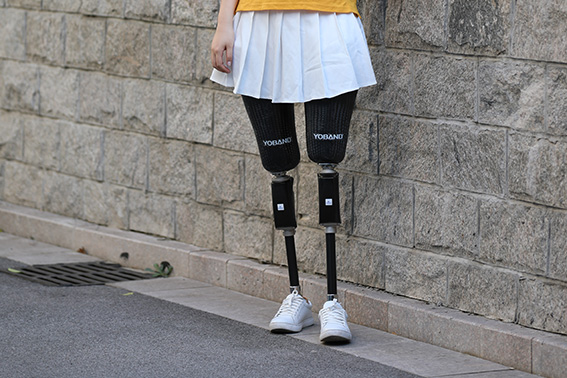
In addition, if the knee joint of the healthy leg can do some flexion and extension when pulling the wrapping, so that the residual limb can have up and down piston movement in the prosthetic socket(that is, the residual limb can move up and down), it is easier to completely pull the residual limb into the receiving socket. After the wrapping cloth is completely pulled out, the tension of the skin of the residual limb around the upper edge of the prosthetic socket can be adjusted appropriately, and then the negative pressure valve can be installed.
The shape of the stump will change. If the stump is thin, you can increase the socks, and if the stump is fat, you can reduce the socks; then put a soft inner receptacle (or inner sleeve) on the stump; then put a layer of stronger nylon socks on the outside of the inner sleeve , This layer of socks has the function of protecting the inner sleeve and facilitating insertion into the outer socket of the prosthesis; and then inserting the residual limb with various socks into the outer socket of the prosthesis. If insertion is too difficult, apply some talcum powder to the outside of the nylon stocking and the inside of the socket before inserting.
Through the above method, the prosthesis can be put on, but how to determine whether the position of the residual limb penetrating the socket is correct? Inspections can be judged in several ways.
You can stand up first and feel if you can feel good weight bearing at the ischial tuberosity when the body weight is transferred to the prosthetic side. Is there any pain in the adductor muscle? The skin at the end of the residual limb feels that it has touched the bottom of the prosthetic socket but there is no pain. Whether the external rotation angle of the prosthetic foot during walking is similar to that of the healthy foot.
If you feel pain at the end of the residual limb after wearing, and the prosthesis is short, it may be that the residual limb is inserted into the prosthetic socket too much, and you need to wear 1-2 more layers of residual limb socks. If you feel that the patellar ligament cannot bear the weight when wearing the prosthesis, and the load-bearing area is mostly located at the bony prominence below it, it may be that the residual limb has not been inserted in place.
If the ischial tubercle does not bear weight after wearing, the skin at the end of the residual limb cannot touch the bottom of the socket; and the inner top of the residual limb has large skin folds, which may indicate that the soft tissue of the residual limb has not been pulled in to accept it. The socket is not fully penetrated, and the prosthesis needs to be removed and re-applied.
If after putting on the prosthesis, you find that there is an uncomfortable feeling on the inner side of the root of the residual limb during standing and walking, and the prosthetic toes are rotated outwards or inwards too much during walking, which means that the prosthesis is not properly worn or is worn crookedly, and you need to take it off and put it on again. , it is necessary to pay attention to keep the direction of the inner wall of the prosthetic socket consistent with the walking direction of the amputee when re-wearing.
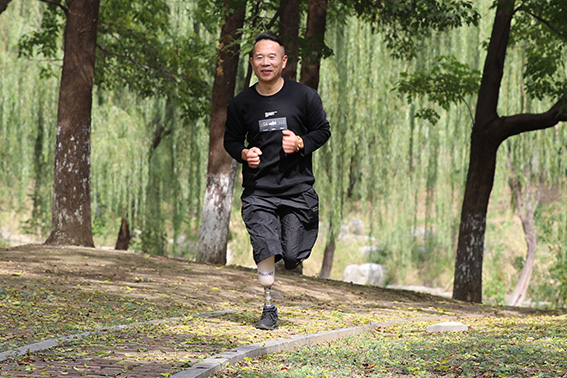
If you feel pain at the end of the residual limb after wearing, and the prosthesis is short, it may be that the residual limb is inserted into the prosthetic socket too much, and you need to wear 1-2 more layers of residual limb socks. If wearing the prosthesis feels that the patellar ligament (the patella is the kneecap, and the area with the width of the next transverse finger is the patellar ligament) cannot bear the weight, the residual limb may not be in place. You can try to reduce a layer of residual limb cover, and then wear. Does the upper prosthesis feel fit?
